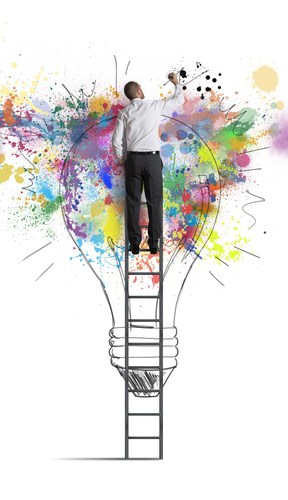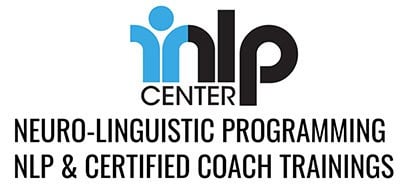Why do we need a reliable way to create a personal paradigm shift?
Because on the whole we’re going about solving persistent personal problems the wrong way. Typical solutions to average problems usually create more average problems.
This is because almost all personal development methods do NOT require or lead to a paradigm shift.
Diets don’t work to help you lose weight and keep it off. You need a whole new perspective on yourself to achieve lasting results.
Learning better communication is not the key to solving vicious cycles in relationships. You need to view people fundamentally differently than ever before. Then, average communication skills are more than enough.
Tricks and techniques are not the key to end chronic procrastination and create high motivation. You need a whole new appreciation for life and your purpose in it to be naturally motivated.
Working on personal discipline is not the key to better results. You need a clear understanding of what your subconscious mind really wants. Then, personal discipline won’t be an issue.
When you have a chronic personal issue to resolve in your life – a big one – the best place to begin is with your personal paradigm. Don’t go into conventional problem-solving mode. Don’t try to figure out how to fix things, especially if this kind of approach has failed in the past.

First, experience a paradigm shift. Then, your problem may evaporate right in front of your eyes. And if the problem doesn’t evaporate, solving it will be a matter of course.
This is what Einstein meant when he said:
We can not solve our problems with the same level of thinking that created them.
Here’s how paradigm shifts work….
Imagine: you live as a nomad in a vast wilderness. This is the setting.
Therefore, you must:
Wear protective clothing to keep you safe from the elements.
Carry a supply of food and water with you at all times.
Carry weapons to fend off wild animals or enemies, and hunt.
Make travel decisions based on where more food and drinking water might be found.
Are you likely to let go of your protective clothing, weapons, or food and water reserves, even though keeping them really slows you down? No, of course not. Your survival is on the line. You’d keep a death grip on these necessities if someone threatened to take them from you.
Shift the setting to a nice home located in a modern suburb.
You don’t need protective clothing in your home, even though you may have access to some.
You don’t need to carry weapons around your house, even though you may own weapons.
You have food and water readily available and won’t be packing it around the house to keep it safe.
You are free to walk anywhere around your property, or city, without having to plan your course around where the food and water is, even though you may decide to stop for food and water at anytime.
The setting – either the wilderness or the suburbs – dictates what you cling to and what you can ignore or let go of.
How does this relate to personal paradigms?

A paradigm is a mental setting. It is the context inside your mind from which you think, feel and live. Your paradigm determines what you hold onto, mentally and emotionally. Most of us are holding onto problems and cannot figure out how to escape them.
All the while, our mental setting dictates that we must hold onto these problems. We believe – deep down – that our survival depends on it. When you undergo a paradigm shift, your tendency to hold onto outdated thoughts and feelings completely transforms.
Before you embark on a new strategy to fix a problem, consider that you are setting yourself up for failure if you don’t have a paradigm shift first.
Changing a problem within an existing paradigm might be like trying to take food and water reserves from a wilderness nomad. The nomad isn’t about to give them up.
So you revert back, time and again, to the same old problems and wonder what’s wrong with you.
Nothing is wrong.
Your paradigm is calling the shots. All of your decisions, feelings and actions make sense within it. However, your personal paradigm is probably outdated, left over from what you determined to be true long ago. You need a paradigm shift!
The problem is, you cannot just pick up a new paradigm down at WalMart. In fact, you can’t even hire an average psychologist to give you a paradigm shift. Paradigm shifts are rare because personally help paradigms are deeply embedded in our psyche. There isn’t a clear cut way to access or alter them.
What’s required to create a paradigm shift on purpose?
Mentoring.
I set out on a quest to enhance my personal development skills. My mentor, a seasoned life coach, said, “Look, I can’t give you a technique to become the Life Coach that you want to ultimately become. However, if you hang around me for five years or so, you’ll get everything you want and more.”
I believed him. And he was right. I can’t think of a specific thing he said or did that made all the difference for me. Yet, those five years did make all the difference in my NLP Life Coach training skills and career.
Shifting your limiting, problem-mongering personal paradigm into one that sets you free is similar. I cannot give you a technique that will do the trick. However, if you hang out with our trainers at INLP Center, we can virtually guarantee you will never look at life in the same way again.
Conclusion
Before attempting to tackle a problem, it’s crucial to undergo a paradigm shift. Trying to change within an existing paradigm is futile. The root of persistent issues often lies in outdated paradigms, and intentional shift is the key.
Mentoring is highlighted as essential for creating a paradigm shift. Drawing from personal experience with INLP Center, the transformative impact of mentorship is emphasized, akin to the journey in becoming a skilled NLP Life Coach.
The path to personal liberation starts with a shift in mental landscape—possible and profound with the right guidance.


